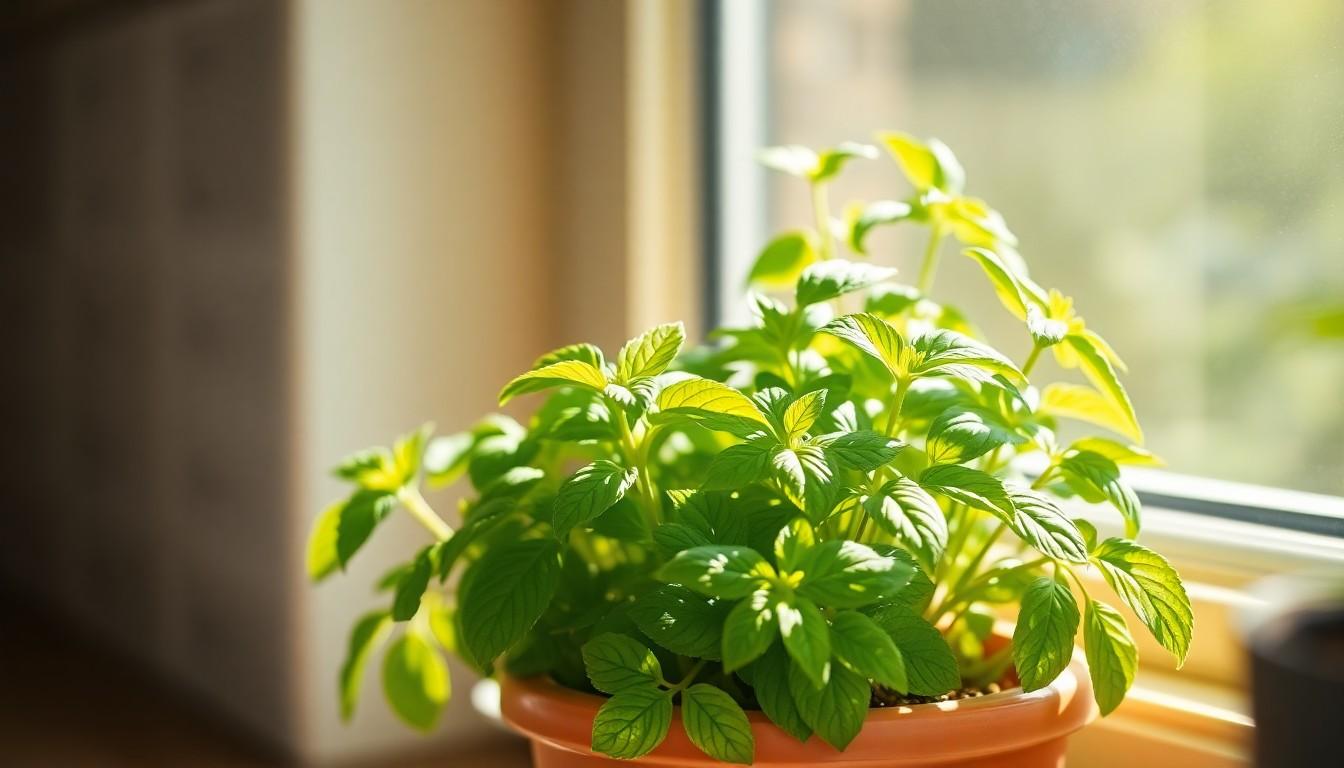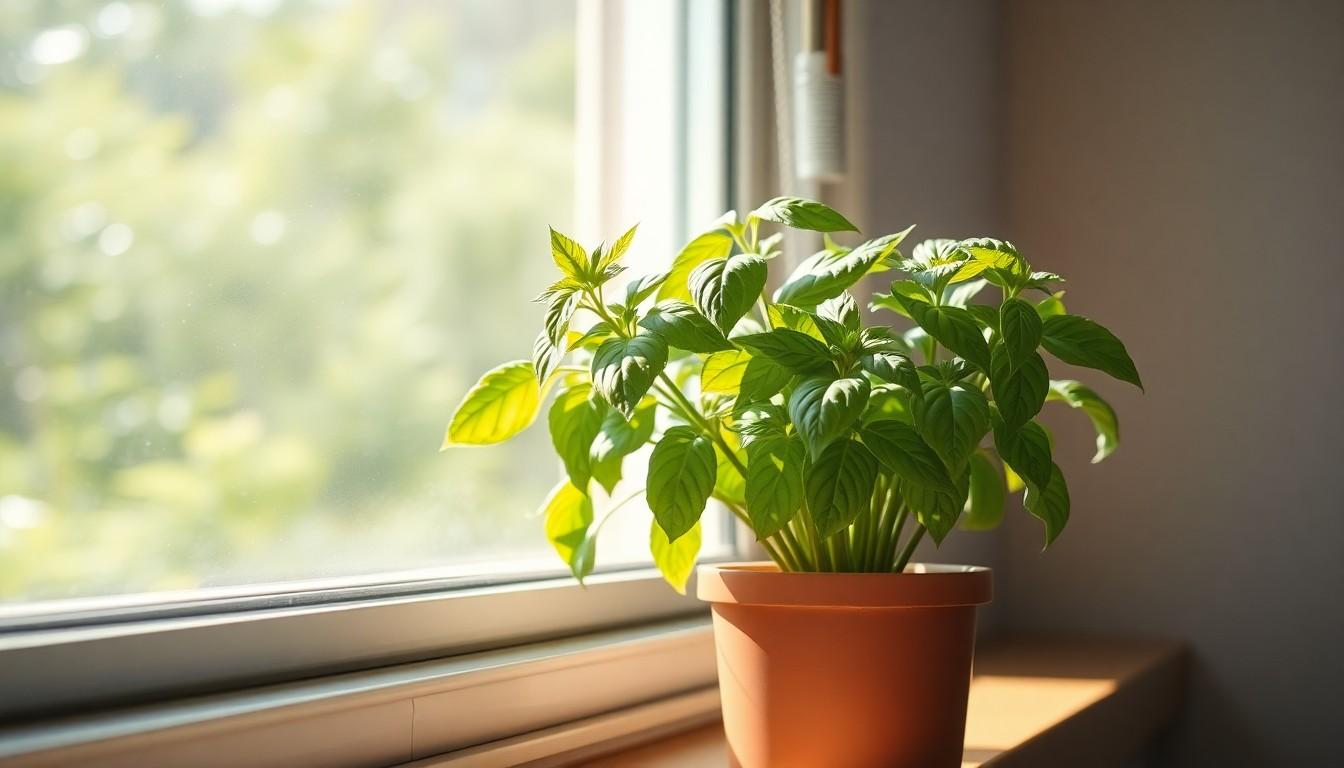The Best Fluffy Pancakes recipe you will fall in love with. Full of tips and tricks to help you make the best pancakes.

How to Care for Basil Plant Indoors: Expert Tips for Thriving Herbs Year-Round
Basil: the herb that adds a dash of gourmet flair to any dish and makes you feel like a culinary wizard. But keeping this leafy green thriving indoors can feel like a high-stakes game of plant roulette. Fear not! With a little know-how, anyone can transform their kitchen into a basil paradise without breaking a sweat or accidentally summoning the plant gods.
Understanding Basil Plants
Basil plants thrive in indoor environments and add flavor to various dishes. Familiarity with specific types and advantages of growing basil indoors enhances one’s indoor gardening experience.
Types of Basil for Indoor Growing
Genovese basil features large, green leaves and rich flavor, making it a favorite for pesto. Thai basil possesses a distinct anise flavor and stands out in Asian cuisine. Lemon basil exudes a refreshing citrus scent and complements seafood dishes. Purple basil adds visual appeal with its striking color while imparting a milder taste. Each variety benefits from similar care requirements, allowing flexibility in growing preferences.
Benefits of Growing Basil Indoors
Growing basil indoors ensures year-round access to fresh herbs. Indoor environments protect plants from pests and extreme weather conditions. Fresh basil enhances culinary creations, adding flavor and nutritional value. Indoor gardeners enjoy the satisfaction of cultivating their own herbs, promoting a sustainable lifestyle. Additionally, basil plants contribute to indoor air quality, creating a pleasant atmosphere.
Essential Requirements for Indoor Basil

Basil plants require specific conditions to thrive indoors. Understanding these requirements ensures successful growth and abundant harvests.
Light Requirements
Bright, indirect sunlight promotes healthy basil growth. Place the plant near a window where it can receive at least six hours of light daily. Utilizing grow lights provides an alternative when natural light is insufficient. Rotate the plant regularly to achieve even growth on all sides. Avoid exposing basil to direct sunlight for prolonged periods, as this can scorch the leaves.
Temperature and Humidity
Temperatures between 65°F and 85°F create an optimal environment for basil. Consistent warmth encourages robust growth and flavorful leaves. Basil prefers humidity levels between 40% and 60%. Increasing humidity can be achieved by misting the leaves or placing a tray of water nearby. Drafts or sudden temperature changes should be avoided, as these stress the plant. Maintaining stable conditions helps ensure a thriving basil plant.
Soil and Pot Selection
Selecting the right soil and pot is essential for nurturing a thriving basil plant indoors.
Best Soil Mix for Basil
A well-draining potting mix promotes healthy growth for basil. Incorporating a blend of peat moss, vermiculite, and perlite ensures adequate aeration and moisture retention. Organic potting soils cater to basil’s nutrient requirements. Adding compost can further enrich the soil, providing essential nutrients. The pH level should range from 6.0 to 7.0 for optimal growth. Regularly check moisture levels to avoid overwatering, which can lead to root rot.
Choosing the Right Pot
Using a pot with drainage holes prevents water accumulation, safeguarding the roots from rot. A pot size of 6 to 8 inches in diameter accommodates basil’s growth while allowing for airflow. Consider using clay or ceramic pots, as they regulate temperature and moisture effectively. It’s beneficial to choose lightweight materials for easier handling. As basil grows, repotting into larger containers may become necessary, ensuring continued health and vitality.
Watering Your Indoor Basil
Watering is crucial for the health of indoor basil plants. Maintaining consistent moisture without allowing soggy conditions fosters optimal growth.
How Often to Water
Watering frequency varies based on environment. Generally, basil requires watering once a week or when the top inch of soil feels dry. Check the soil regularly, as factors like temperature and humidity can affect moisture retention. Adjustments may be necessary during hotter months when evaporation increases. Using a moisture meter helps ensure plants receive adequate hydration without risk of overwatering.
Signs of Overwatering and Underwatering
Spotting issues with water levels is essential for basil health. Yellowing leaves often indicate overwatering, while wilting or drooping leaves suggest underwatering. Root rot can develop from excessive moisture, leading to dark, mushy roots. In contrast, consistently dry soil causes stunted growth and crispy edges on leaves. Regular inspection ensures watering habits support robust basil development, promoting optimal flavor and vitality.
Pruning and Harvesting
Pruning and harvesting basil promotes growth and enhances flavor. Keeping these practices in mind ensures a healthy plant.
When and How to Prune
Pruning basil encourages bushier growth and prevents flowering, which can reduce flavor. Start pruning when the plant reaches 6 to 8 inches in height. Cut just above a leaf node, allowing multiple branches to sprout from the cut. Conduct pruning every few weeks to maintain shape and encourage new growth. Avoid removing more than one-third of the plant at once to prevent stress. Regularly trimming dead or yellowing leaves also improves air circulation and overall plant health.
Best Practices for Harvesting
Harvesting basil at the right time ensures the best flavor and aroma. Pick leaves in the morning when oil content is highest. Begin by taking the top leaves first, leaving the lower leaves intact for continued growth. Use clean scissors or sharp shears to avoid damaging the plant. Harvesting regularly boosts plant vitality and yields more leaves. Store harvested leaves wrapped in a damp paper towel in the refrigerator or place them in water like cut flowers for freshness.
Common Pests and Diseases
Indoor basil plants may attract common pests and suffer from diseases. Identifying these issues early ensures a healthier plant.
Identifying Common Pests
Aphids commonly appear as small, soft insects cluster on leaves. Spider mites create fine webbing and cause leaf discoloration. Whiteflies resemble tiny moths and can weaken plants by sucking sap. Check for black sooty mold, which hints at aphid infestations. Fungal diseases like powdery mildew and root rot manifest as white spots or wilting. Swift diagnosis proves crucial to prevent major damage.
Preventive Measures and Treatments
Good hygiene helps keep pests at bay. Wash hands before tending to plants and clean tools regularly. Regular inspection of leaves and stems detects issues early. Natural insecticidal soap treats infestations effectively. Neem oil works well against various pests while remaining safe for basil. Water basil plants at the base to avoid excess moisture on leaves. Proper air circulation minimizes fungal issues, while removing affected leaves prevents further spread.
Conclusion
Caring for a basil plant indoors can be a rewarding experience. With the right conditions and attention, anyone can enjoy fresh basil year-round. By providing adequate light temperature and humidity, selecting the right soil and pot, and maintaining a consistent watering schedule, the plant can thrive.
Regular pruning and harvesting not only enhance flavor but also promote healthy growth. Staying vigilant against pests and diseases ensures the plant remains robust and productive. Embracing these practices allows for a flourishing basil plant that adds flavor to meals and enriches the indoor environment.
